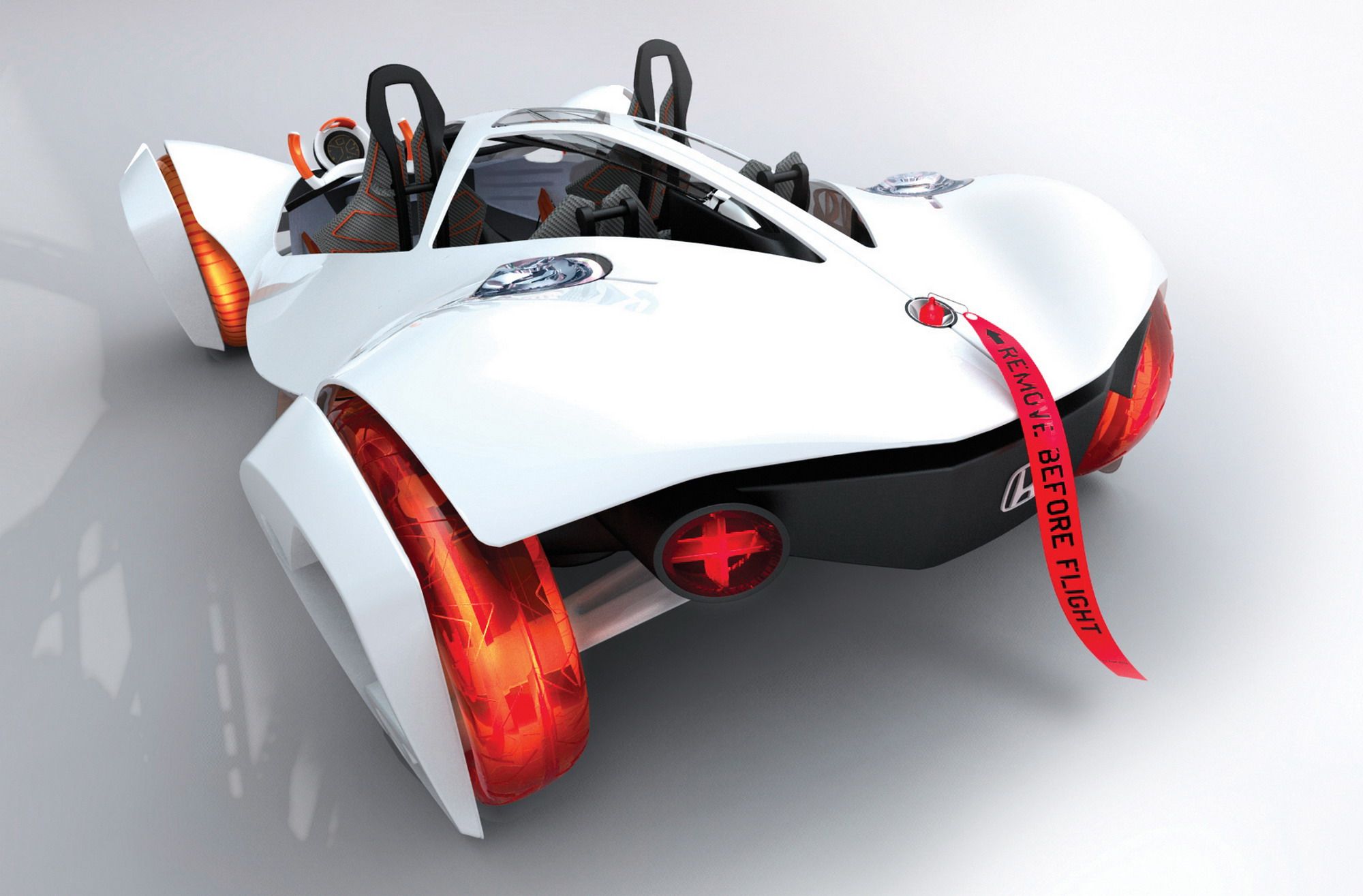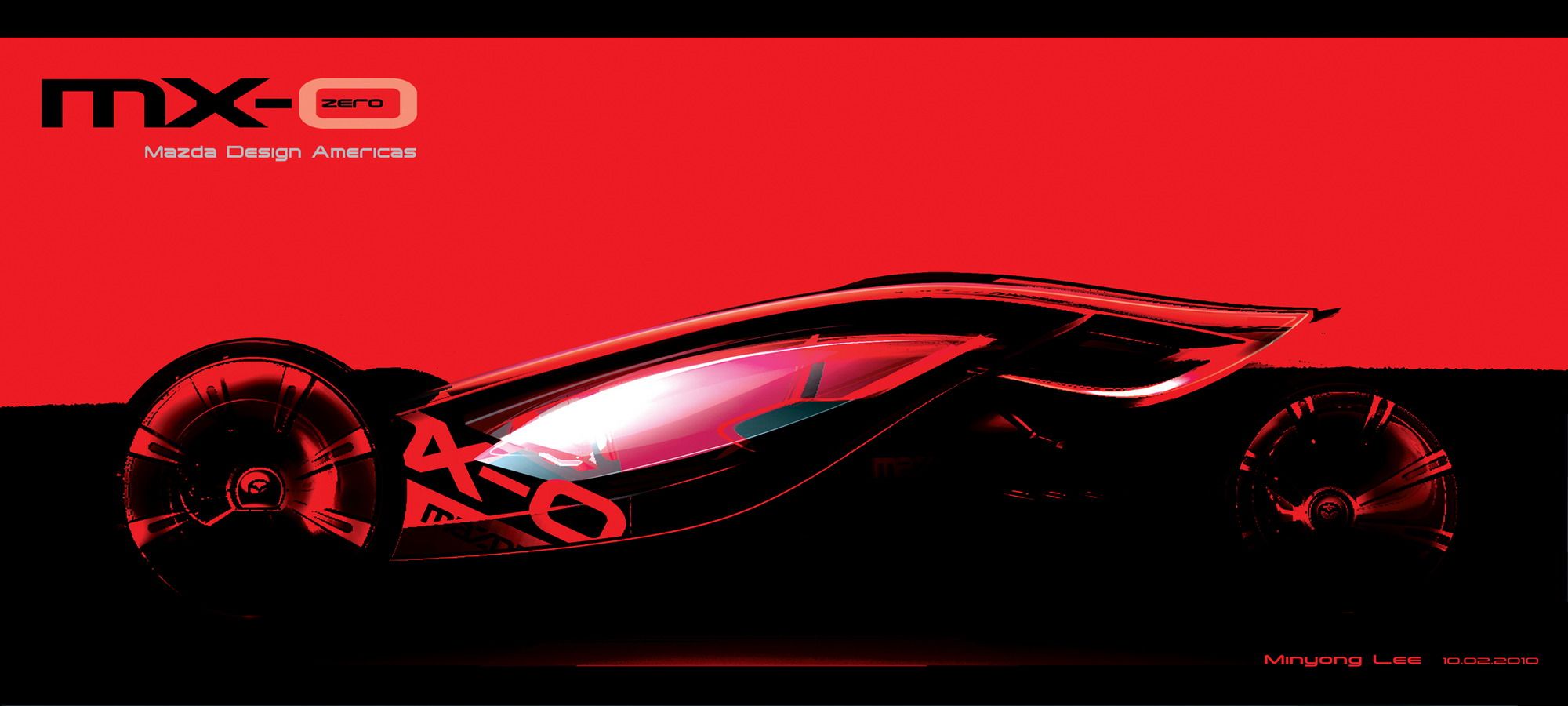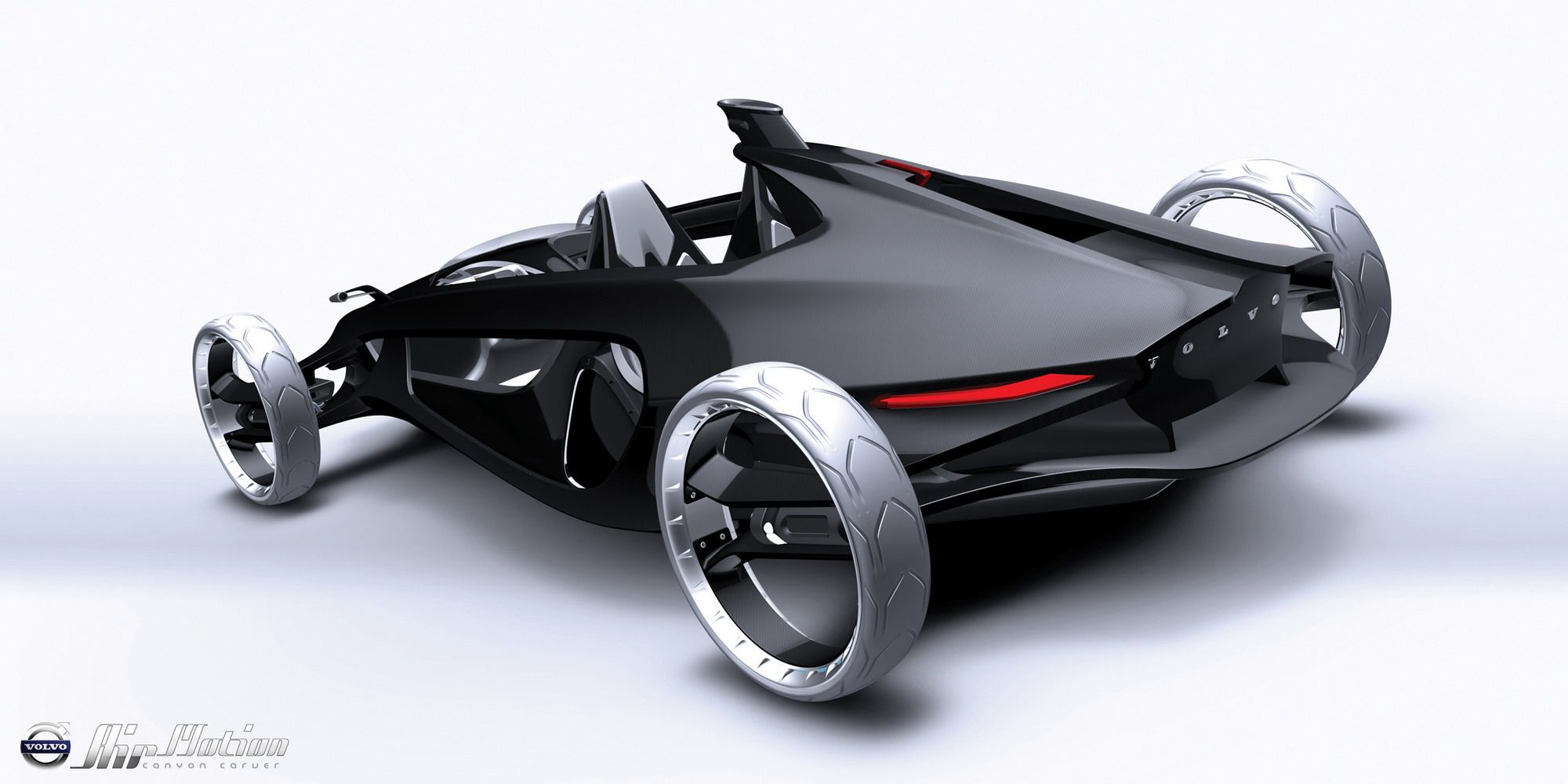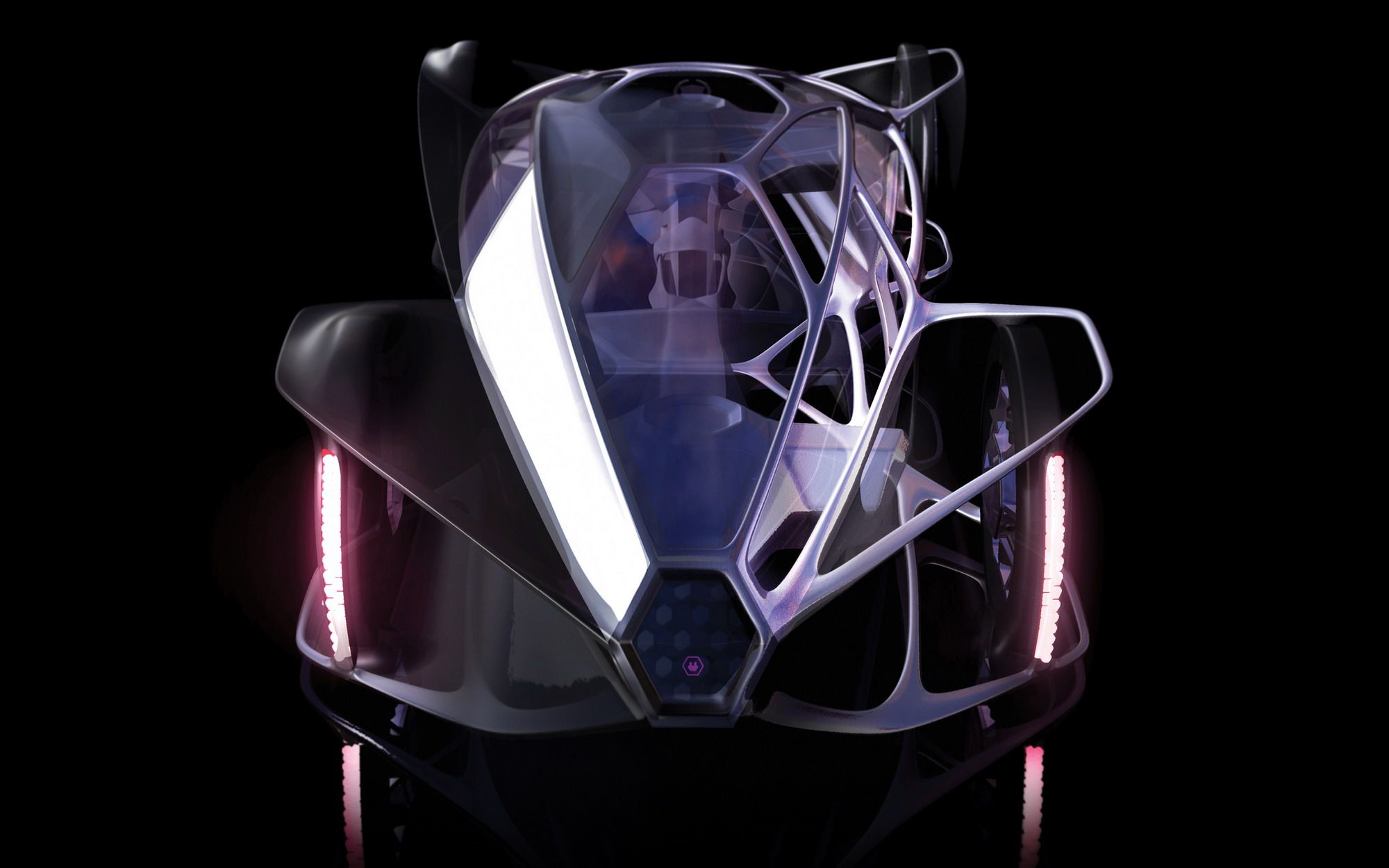For this year's Los Angeles Auto Show->ke211 Design Challenge, the task was to design a 1,000 lb, four-seat vehicle. It can't just be any vehicle, however. The newly designed vehicle must be both comfortable and safe, and it also has to deliver satisfactory driving performance without sacrificing the styling consumers’ demand. Talk about a tall order! It's not going to be easy, but, hey, that's why they call it a challenge.
This year's entries are different from previous years because Mercedes->ke187' Germany and Japan studios have joined in the mix to offer a different perspective than before. Among the entries of this year's competition are a Cadillac->ke18 Aera, Honda->ke34 Air, Maybach->ke52 DRS “Den-Riki-Sha”, Mazda->ke53 MX-0, Mercedes-Benz Biome, Nissan->ke62 iV, Smart->ke83 454, and Nori concept. The entries range from vehicles made from organic materials and powered by compressed air to futuristic models relying on the latest high-tech advancements.
The winning design will be announced on November 18th during the Design Los Angeles Conference at the Los Angeles Auto Show. In order to win, the designs not only have to meet the weight constraint (1,500 pounds maximum with occupants), but they also have to be judged on the artistic beauty, comfort, uniqueness of design, roadworthiness, sustainability, performance, and user-friendliness of the vehicle.
Press release and full details on each vehicle after the jump.
Press release
With consumers seeking to minimize consumption of the earth’s resources, auto manufacturers and designers are challenged to meet these growing socio- and economic trends with style, while adhering to government and safety regulations.
This year’s Los Angeles Auto Show Design Challenge asks design studios to envision a 1,000 lb., four-passenger vehicle that is both comfortable and safe, while delivering satisfactory driving performance without sacrificing the styling consumers’ demand. The entries range from vehicles made from organic materials and powered by compressed air to futuristic models relying on the latest high-tech advancements.
For the last six years, the Design Challenge has been focused on the Southern California Automotive Design community. For the first time, Mercedes-Benz studios from Germany and Japan will join the competition to add an international perspective. The winning design will be announced Nov. 18 during the Design Los Angeles Conference at the Los Angeles Auto Show.
Judging criteria is based upon not only meeting the weight constraint (1,500 pounds maximum with occupants), but also for the artistic beauty, comfort, uniqueness of design, roadworthiness, sustainability, performance and user-friendliness of the vehicle.
2010 Design Challenge entries include:
 General Motors Advanced Design California – The Cadillac Aera (Aero + Era) takes an innovative and stylistic approach to ultra-light weight vehicle design. A 1000 lb., 2+2 touring coupe, with a range of 1000 miles utilizing alternative fuel. Aera’s highly advanced body structure utilizes a polyhedral, 3D lattice, mono-formed frame with a flexible pressurized polymer skin for body panels and glass, optimizing weight, aerodynamics and safety.
General Motors Advanced Design California – The Cadillac Aera (Aero + Era) takes an innovative and stylistic approach to ultra-light weight vehicle design. A 1000 lb., 2+2 touring coupe, with a range of 1000 miles utilizing alternative fuel. Aera’s highly advanced body structure utilizes a polyhedral, 3D lattice, mono-formed frame with a flexible pressurized polymer skin for body panels and glass, optimizing weight, aerodynamics and safety.
Honda Advanced Design Studio, Pasadena, CA – The Honda Air concept is a vision of the future of lightweight and alternative fuel performance vehicles. Inspired by the modern roller coaster, as well as skydiving wing-suits, the Air is powered by a compressed air and pneumatic regulator system. At just under 800 lbs., the powerful anthem of pneumatic propulsion exemplifies Honda’s concept of fun to drive. The pow of dreams.
Mercedes-Benz Research and Development Japan: Advanced Design Center Japan – Leveraging values of the classic "Jin-Riki-Sha" (human powered rickshaw), the MAYBACH DRS “Den-Riki-Sha” (electric powered rickshaw) embodies the attributes of a radically new car culture in the near future. The result: A futuristic composition of ultra light construction with a unique luxurious exterior and interior expression. Powered by a self balancing electric drive unit and controlled by an onboard computer plugged into a mega city’s transport infrastructure, the MAYBACH DRS delivers a smooth, luxurious journey cross town. MAZDA Design Americas – With each component in the MX-0 redesigned to carry out the functions of several MX-5 components, a multitude of parts have been replaced with fewer, simplified ones, using innovative lightweight materials. With its ultra-light mass pushed by high-torque electric motors, the MX-0 delivers impossible acceleration and instant cornering. It’s more like flying than driving.
MAZDA Design Americas – With each component in the MX-0 redesigned to carry out the functions of several MX-5 components, a multitude of parts have been replaced with fewer, simplified ones, using innovative lightweight materials. With its ultra-light mass pushed by high-torque electric motors, the MX-0 delivers impossible acceleration and instant cornering. It’s more like flying than driving.
Mercedes-Benz Research & Development North America, Inc.: Advanced Design Center California – The Mercedes-Benz Biome utilizes technologies from nature to achieve ultimate light weight and seamless integration into the ecosystem. Grown in the ecologically sustainable Mercedes-Benz Nursery, each vehicle is grown from two seeds. One seed, the front star, grows the interior of the vehicle from Mercedes-Benz DNA, while the seed capsule creates the vehicles exterior. Both seeds grow together and are genetically engineered into customer’s specifications.
Nissan Design America – The Nissan iV is a super-lightweight sports tourer that showcases “organic synthetics,” a revolutionary and sustainable manufacturing technique in which automotive parts are cultivated like agriculture. Every detail of the Nissan iV is engineered toward renewable, lightweight strength. Derived from fast-growing ivy and re-enforced with spider silk composite, the biopolymer frame is flexible and ultra-light, yet extremely robust. Mercedes-Benz Advanced Design Germany – The Smart 454 is manufactured by incredibly high tech robots that look as friendly and cuddly as our grandmothers. The Tridion-frame (chassis), knit by “Smart Granny Robots” (otherwise know as SGRs), creates complex shapes and forms out of carbon fibre, enabling the geometry to be optimized in strength and weight.
Mercedes-Benz Advanced Design Germany – The Smart 454 is manufactured by incredibly high tech robots that look as friendly and cuddly as our grandmothers. The Tridion-frame (chassis), knit by “Smart Granny Robots” (otherwise know as SGRs), creates complex shapes and forms out of carbon fibre, enabling the geometry to be optimized in strength and weight.
Calty Design Research, Inc. – The NORI concept presents the idea that the body and chassis are one as a PODULAR form; that is designed to be strong, light and beautiful. Created using “nori,” (the Japanese word for seaweed) combined with a carbon fiber weave for strength, the NORI not only reduces weight and the number of parts while capturing and generating energy, but minimizes the impact on the ecosystem.
Volvo Car Corporation: Monitoring and Concept Center VMCC – Minimizing weight and complexity, while maximizing driving enjoyment, is the philosophy behind the Volvo Air Motion Concept. Thousands fewer components are employed than in a traditional car thanks to the powerful, yet simple, compressed air motors. The Volvo Air Motion demonstrates the beauty and purity of Scandinavian design and delivers a guilt free, raw driving experience.
Entries will be judged by Tom Matano, director of Industrial Design at San Francisco’s Academy of Art University; Imre Molnar, dean of Detroit’s College for Creative Studies; Stewart Reed, chairman of Transportation Design, Pasadena’s Art Center College of Design and Clive Hawkins, president of Aria Product Development.

